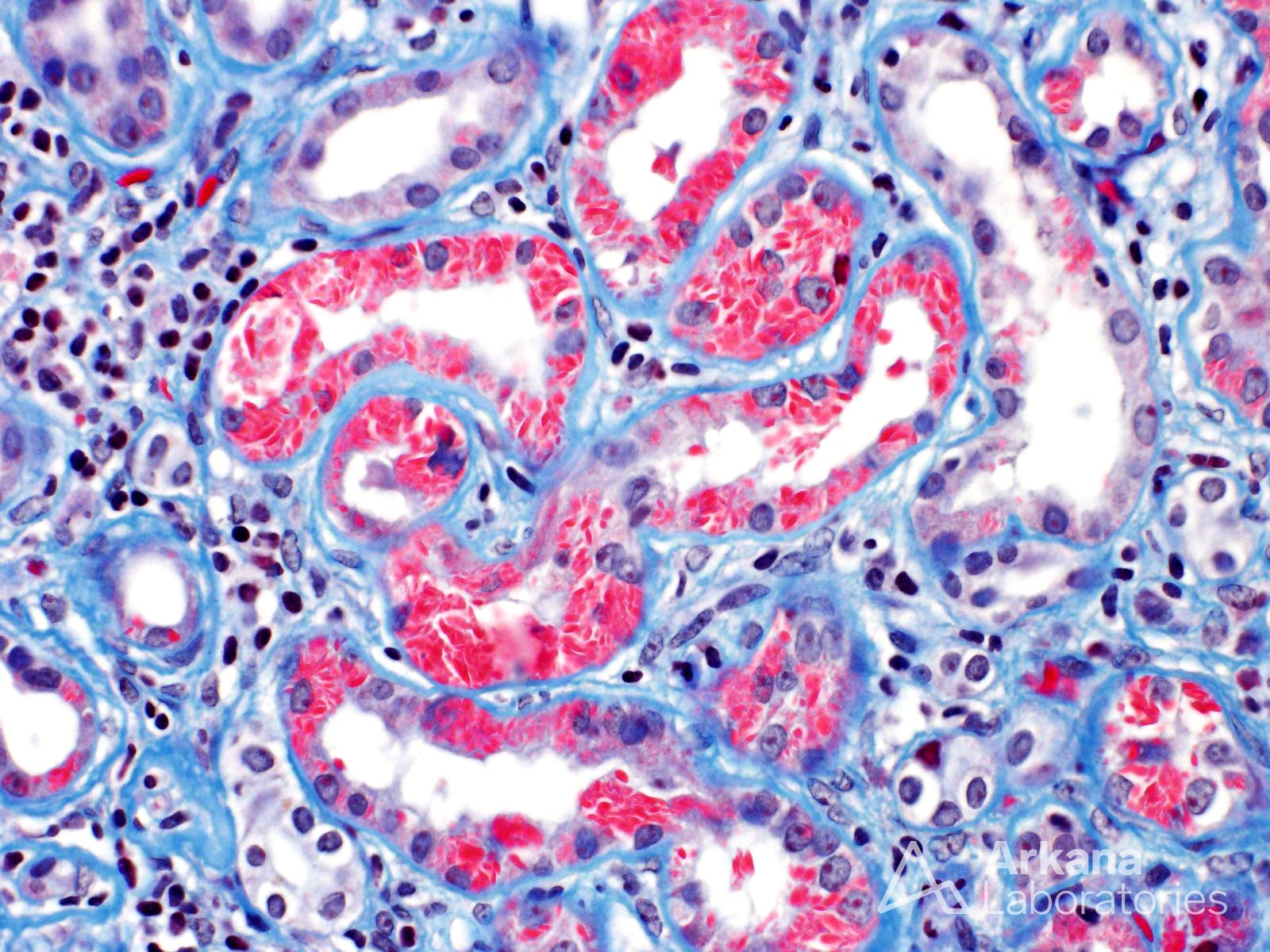This image shows the prominent intracytoplasmic tubular epithelial crystals characteristic of a subset of light chain proximal tubulopathy cases associated with Fanconi syndrome (normoglycemic glycosuria, aminoaciduria, uricosuria, hyperphosphaturia with hypophosphatemia). The crystals represent precipitated nephrotoxic monoclonal light chains, and unlike cases without crystals, pronase-digested immunofluorescence may be helpful in proving light chain restriction when routine immunofluorescence is negative. Light chain proximal tubulopathy with crystals indicates an underlying clonal plasma cell proliferation, and may be seen in patients with monoclonal gammopathy of undetermined significance (MGUS), multiple myeloma, or lymphoma. Evidence of light chain cast nephropathy and/or monoclonal immunoglobulin deposition disease may also be present in a given biopsy.
Stokes MB, et al. Light Chain Proximal Tubulopathy: Clinical and Pathologic Characteristics in the Modern Treatment Era. J Am Soc Nephrol. 2016 May; 27(5):1555-65.
Quick note: This post is to be used for informational purposes only and does not constitute medical or health advice. Each person should consult their own doctor with respect to matters referenced. Arkana Laboratories assumes no liability for actions taken in reliance upon the information contained herein.


